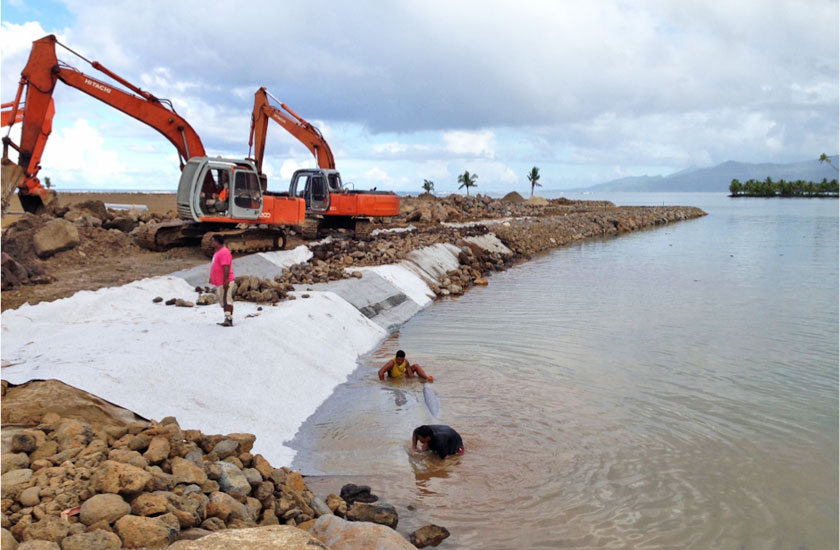Project Description
Coastal Rock Wall Protection at the Vaisigano Bridge and Taumeasina Island Resort.
Different Types Of Seawalls
1. Vertical Seawalls
Vertical seawalls stick straight up into the air like a fence made of steel or concrete. These seawalls are easy to design, and easy to construct. However, these seawalls take the full brunt of a wave and the wave has no chance to slow down before hitting the wall. Because of this, these walls wear down quickly. Furthermore, they can be undercut as water finds its way under the wall.
2. Curved Seawalls
Also called stepped seawalls, these structures redirect waves without causing as much disturbance as a vertical seawall. Curved seawalls are a more natural way to divert energy, and produce less turbulence in the water around it.
3. Mound Seawalls
A mound seawall is exactly what it sounds like: a mound. Rock and concrete armor guard a sloped hill. This doesn’t necessarily form a wall, but it slows down an ocean wave before it can hit the shore. These seawalls are not for exposed or high energy shores. If exposed to too much velocity, these seawalls wear away faster than the previous two, leaving a ramp for the waves.

Project Information
- Client: Taumeasina Island Resort / Samoa Government
- Location: Taumeasina Island / Vaisigano Bridge
- Contractor: Bluebird Construction




